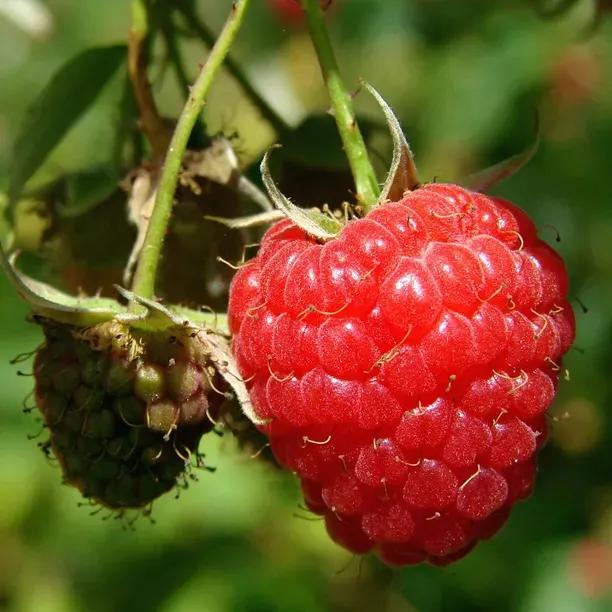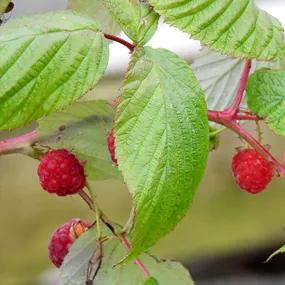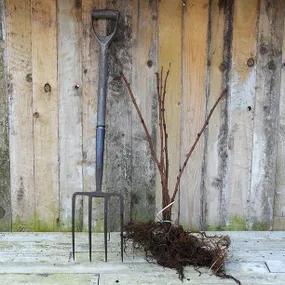Heritage Raspberry, Bareroot Canes
Honest Delivery Prices- Season: Autumn (Aug-Oct).
- Type: Primocane, crops on new stems
- Bushy, good vigour
- Height: 2m
- Self fertile
- Fruit: Red, juicy, firm.
- Popular commercial variety
- Spacing: 50cm apart, 1.5m between rows
Recommended extras
Description
Heritage Raspberry Bushes
Red, richly flavourful fruit is juicy and firm. A primocane, cropping Aug into Oct. Very popular commercial variety, because it is a reliable plant with tasty fruit that travels well: as ever, the ones you grow always taste better than the ones in the supermarket that may have travelled halfway around the world to reach you.
Certified and grown from virus-tested parent material in the UK.
Please note: In line with general practice, our raspberries are delivered with last year's growth cut back to 45-60cm.
Summer fruiting raspberries (floricanes) may bear a few berries in the summer following planting, but their first full fruiting season will be in the year after, on their first year's growth.
Autumn fruiting raspberries (primocanes) should crop quite well in their first year, and you can help them by thinning off small and malformed fruit.
Browse our raspberry plants.
Features:
- Season: Autumn (Aug-Oct).
- Type: Primocane, crops on new stems
- Bushy, good vigour. Has thorns
- Height: 2m
- Self fertile
- Fruit: Red, juicy, firm.
- Spacing: 50cm apart, 1.5m between rows
- Certified
Growing Heritage Raspberries:
Heritage is more of a sun lover than average, so we don't recommend it for shadier spots, especially further North.
Raspberries are easy to grow in a humus rich, moist soil that drains well, lots of sun and some shelter from strong wind. They are convenient to grow in rows with light support wires or ropes on either side to hold the canes up nicely, otherwise they will tangle outwards, set new root where they lie on the soil, usually receive less light, and your fruit will be closer to the soil life.
Their roots are shallow, fragile and spreading, so prepare the soil wide rather than deep for them, and consider 6 to 12 inch tall raised beds if your soil is poor or hard clay. Either way, try to add plenty of organic matter, rotted manure is great. Also, don't trample the soil next to your plants, especially in the growing season, and don't let the soil dry out when the fruit are forming; keeping an eye on the weather, delay spring mulching as long as there is wet weather and until the soil has well warmed up, then apply some more mulch in a dry mid-summer spell after a good watering to preserve moisture.
If the crowns of your raspberries rot, it's likely because the site is too damp.
Spacing: 40-50cm apart along the rows, with 1.5m between rows
Did You Know?
Heritage is the main raspberry farmed in Chile, which was the world's 8th largest producer in 2020, and is popular with farmers in general. It was bred by Cornell University, New York, in 1969 from a hybrid of Milton and Cuthbert crossed with Durham.
Planting Instructions
Remember to plant raspberries with their roots close under the surface and the crown exposed: deep planting kills them. Keep them well watered and mulch well every spring when the soil is warm
Feed with a high potash fertiliser.



